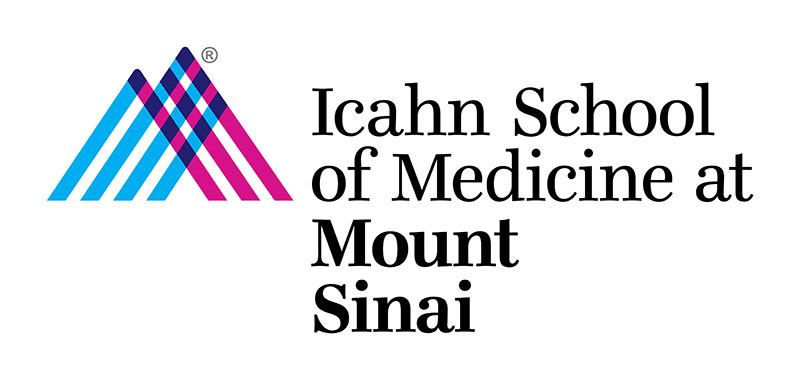Fang Laboratory
The Fang Laboratory is a member of the Orthopaedic Research Laboratories and the Black Family Stem Cell Institute in the Icahn School of Medicine at Mount Sinai. The Fang lab involves biomechanics, development biology, and tissue engineering strategies that develop a mechanistic understanding of regulatory factors (i.e., mechanical cues, transcription factors) maintaining cell identity and driving cell lineage commitment during musculoskeletal tissue development, mechanical adaptation, and pathogenesis. The Fang lab has a strong focus on tendon and enthesis repair and regeneration.
Han Laboratory
The Han Laboratory for Cell-Instructive Biomaterials & Regenerative Engineering (CIBRE) is a member of the Orthopaedic Research Laboratories and the Black Family Stem Cell Institute in the Icahn School of Medicine at Mount Sinai. The Han lab develops cell-instructive biomaterials to study mechanisms of stem cell-niche interactions, disease modeling, stem cell manufacturing, and stem cell therapy.
Holguin Laboratory
The Holguin Laboratory is a member of the Orthopaedic Research Laboratories and the Black Family Stem Cell Institute in the Icahn School of Medicine at Mount Sinai. The Holguin laboratory focuses on the biomechanics and mechanobiology of the spine undergoing adaptation to aging, mechanical forces, genetics and injury with an eye towards therapy. Techniques used in the laboratory include molecular (e.g., PCR, qPCR, RNA-sequencing, Western blots), histologic (e.g., staining, IHC, fluorochrome histomorphometry), imaging (e.g., DEXA, microCT, MRI), and biomechanical (e.g., spinal-unit tension-compression, indentation), and genetic rodent models.
Hubmacher Laboratory
The Hubmacher Lab is a member of the Orthopaedic Research Laboratories at Mount Sinai. The Hubmacher lab’s research focuses on the role of the extracellular matrix, the “glue” that holds the cells together, in the formation and function of musculoskeletal tissues. The lab studies mechanistic and molecular aspects of protein networks comprised of fibrillin microfibrils, ADAMTS proteases and ADAMTS-like proteins and their roles in musculoskeletal development. The Hubmacher lab has generated mouse models of these disorders and uses cell-based assays and biochemical and biophysical approaches to dissect hierarchical protein-protein interactions in the extracellular matrix and to determine responses of tissue-resident cells to faulty extracellular matrices deposited in disease conditions.
Iatridis Laboratory
The Iatridis Laboratory is a member of the Orthopaedic Research Laboratories and the Black Family Stem Cell Institute in the Icahn School of Medicine at Mount Sinai. The Iatridis Lab is devoted to research on spine and intervertebral disc mechanobiology, degeneration, and regeneration. Research areas include mechanical, biological, and chemical measurements associated with spine and intervertebral disc bioengineering in tissue, animals, and cells. The Iatridis lab researches interactions between spine and nervous system tissues in acute and chronic back pain including. The Iatridis lab is also developing strategies to improve intervertebral disc repair methods with cell and tissue engineering therapies.
Upper Extremity & Nerve Laboratory
The Hausman/Cagle Lab is a member of the Orthopaedic Research Laboratories located on the 20th floor of the Annenberg Building at Mount Sinai. Our research is dedicated to improving the outcomes of peripheral nerve injuries by developing novel imaging modalities and assessments of peripheral nerve damage and function. Our team also focuses on clinical and experimental biomechanics to improve surgical outcomes of patients with Hand, Wrist, Elbow, and Shoulder injuries.
Orthopaedic Research Laboratories Facilities
The Orthopaedic Research Laboratories of The Icahn School of Medicine are located on the 20th floor of the Annenberg Building of Mount Sinai Health System. The laboratories occupy more than 5000 sq ft of contiguous space, with facilities dedicated to supporting morphological studies, cell and molecular biology, biomechanics, and spine bioengineering. Faculty offices are located adjacent to the research laboratories.
Core Facilities
Morphological Research Unit
Histological processing and analysis of specimens occurs in the Morphological Research Unit. Capabilities include histological sectioning of undecalcified and decalcified skeletal tissues, wide-range of histochemical assays, brightfield, fluorescence, DIC, darkfield and polarized light microscopy, computer-based image analysis and histomorphometry.
Experimental Biomechanics Unit
Mechanical testing occurs in Experimental Biomechanics Unit, located adjacent to the Morphology Unit. There are facilities for human and animal tissue handling, Micro-Computed Tomography, image analysis, and clean areas for rodent surgery and experimental procedures. There are 2 Instron servohydraulic systems, 1 Bose Electromechanical system, and a TA Instruments Rheometer to support a wide variety of load modes and magnitudes. Several custom fixtures and test machines have also been developed for mechanical stimulation and mechanical property evaluations.
Cell and Molecular Biology Unit
The Laboratory is located adjacent to the Experimental Biomechanics and Morphology facilities, and is a fully equipped facility to support cell and molecular biology research. Extensive cell culture facilities include incubators, laminar flow hoods, and other equipment for a range of organ culture and cell culture experiments including hypoxia conditions. Custom loading devices for mechanical stimulation include cell pressurization and cell stretch systems. For organ culture several additional custom loading devices exist for mechanical stimulation devices of intervertebral disc and tendon. The facility also contains extensive equipment for RNA and protein measurements including PCR, Western blot, and microplate readers.
Functional Animal Unit
This lab houses equipment that allows for IACUC approved live animal experiments. Several treadmills are setup for exercise protocols with small animals models. In addition, our facilities are equipped with functional assays, including gait analysis and joint laxity measurements.
Clinical
Autopsy Services of Icahn School of Medicine is a 5 minute walk from the 20th floor of the Annenberg Building. This is an excellent facility that meets all state and federal regulations with helpful technical staff who have committed to work closely to provide human tissue based on research needs.

